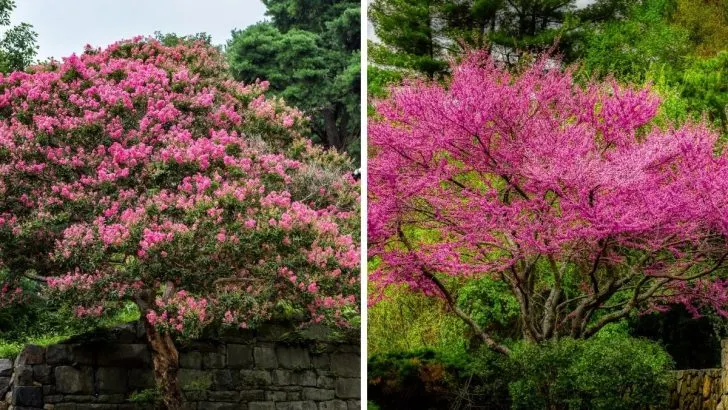Today, we’re going to discuss flowering trees in Georgia, the amazing flowers of the southeastern united states region.
Some of them might bloom all year round if you take care of them carefully and with lots of love.
I guess I got you interested now haven’t I? I would be intrigued as well. But let’s not stay on that only. Let’s learn and read more about it, and who knows.
This fall or this summer you might plant one in your very own lovely garden.
1. All About Flowering Dogwood
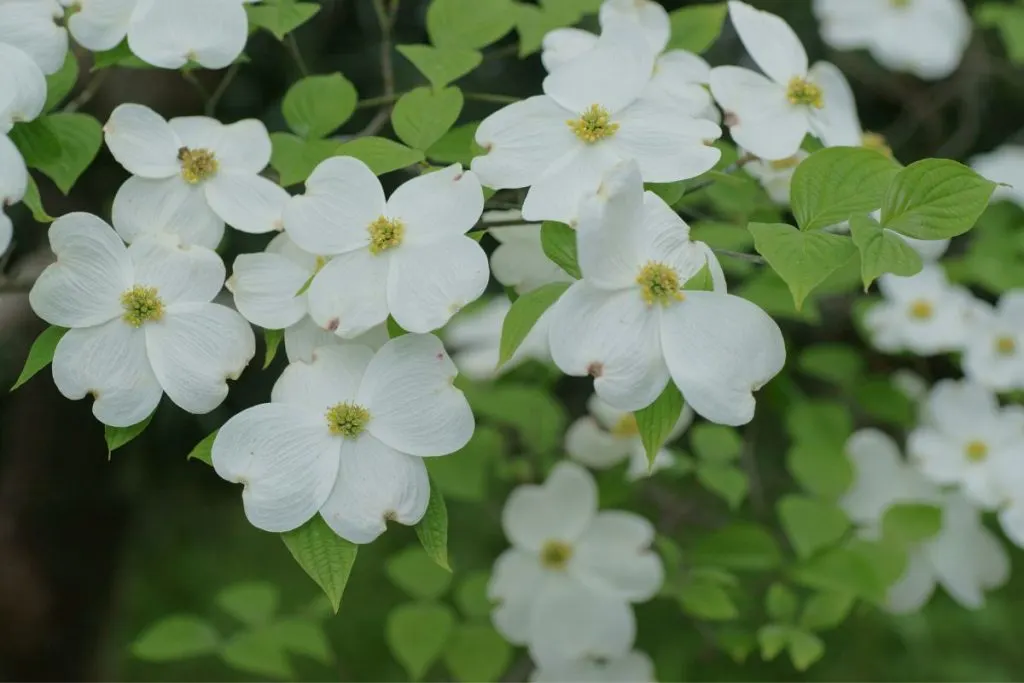
Dogwood (Cornus Florida) is a typical common tree/shrub species of the Upper Danube.
It is a large deciduous broad and densely branched shrub that grows up to 16 feet. It has a fibrous root. The bark is gray and smooth, with reticulate fissures in old age.
The shoots are thin and shaggy, covered with tiny hairs, purple-red on the sunny side and greenish on the shaded side. it is one of the best trees in Georgia for sure.
Its brother’s white dogwood is similar but it is a tree with white flowers and lovely white petals instead of light pink flowers. Unlike regular dogwood, white dogwood likes full sunlight and loamy soils.
LIGHT CONDITIONS
This isn’t a partial shade tree or sun tree. They grow well both in sun and shade. Part shade and light indirect light work well for these lovely trees. However, full sun isn’t very recommended for dogwood trees.
WATERING SCHEDULE
Water regularly until layers of water form. Then add watering and cover to retain moisture during hot drought. Pull the mulch a few inches back from the trunk of the tree.
Dogwood is not necessarily drought tolerant because it prefers moist soil and can tolerate many humid conditions.
SOIL TYPE
Dogwoods grow best in well-drained soil, a bit acidic soil that contains organic matter. It’s best to plant them in fall or late summer.
However, these trees don’t bloom in wintertime. These trees attract wildlife, especially birds.
FERTILIZER
Be careful when fertilizing young dogwood trees. Too much fertilizer will kill a lot of newly planted trees.
PROPAGATION
Dogwood trees are very adaptable plants, it is easily transplanted, and to achieve the best effect, they must be cut almost to the ground level in March or April every year.
2. Cherry Trees And Their Pink Flowers
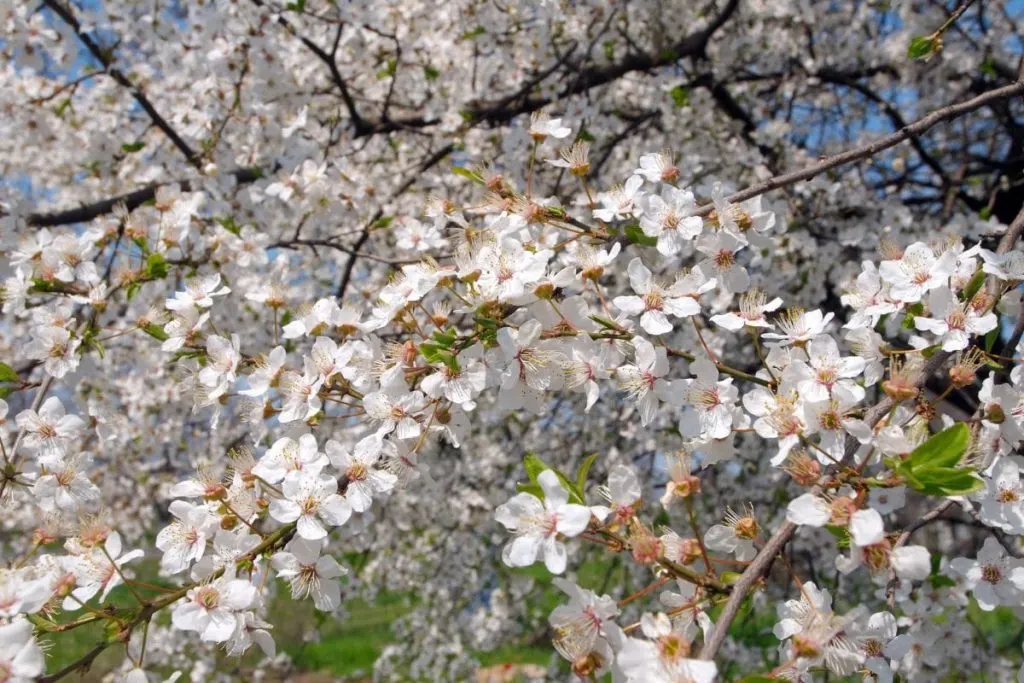
The cherry tree (Prunus avium) is a deciduous type of tree that can grow up to 30 feet. The bark of the tree is gray-red and peels off in the form of concentric circles.
They are usually grown in early summer or sometimes even in March and April depending on the climate zone you’re in.
LIGHT CONDITIONS
This lovely tree with fragrant flowers and wonderful pink blooms grows well in partial shade places with a bit of bright light.
They can stand sun as well, but not full sun for the entire day. They usually bloom in early spring.
WATERING SCHEDULE
In the first years of life, the tree is watered once a month with 2.6 gallons. After the first year of life, water intake increases to 4.5 gallons.
After the second year of life, watering is carried out every 2 months, and about 7 gallons are added. Further hydration is carried out after flowering, in the stage of kidney swelling.
SOIL TYPE
The soil should be loose. Neutral soils (pH 5-7) are recommended. The cherry tree produces the best fruits on clay soil.
Before planting, in the fall, soil preparation is carried out. The land should be cleaned of weeds and disinfected with a solution of copper sulfate (3%).
FERTILIZER
The analysis determines the concentration of individual nutrients and soil reaction. The number of mineral fertilizers and the measure of calcification are determined based on nutrients and the reaction of the soil.
PROPAGATION
Propagation of the cherry tree is done by pollinators or by self-fertilization. Cherry trees are self-sterile, so intrinsic compatibility occurs. For propagation, it is necessary to plant multi-varietal plantations in different rows.
3. Crape Myrtle For Your Garden
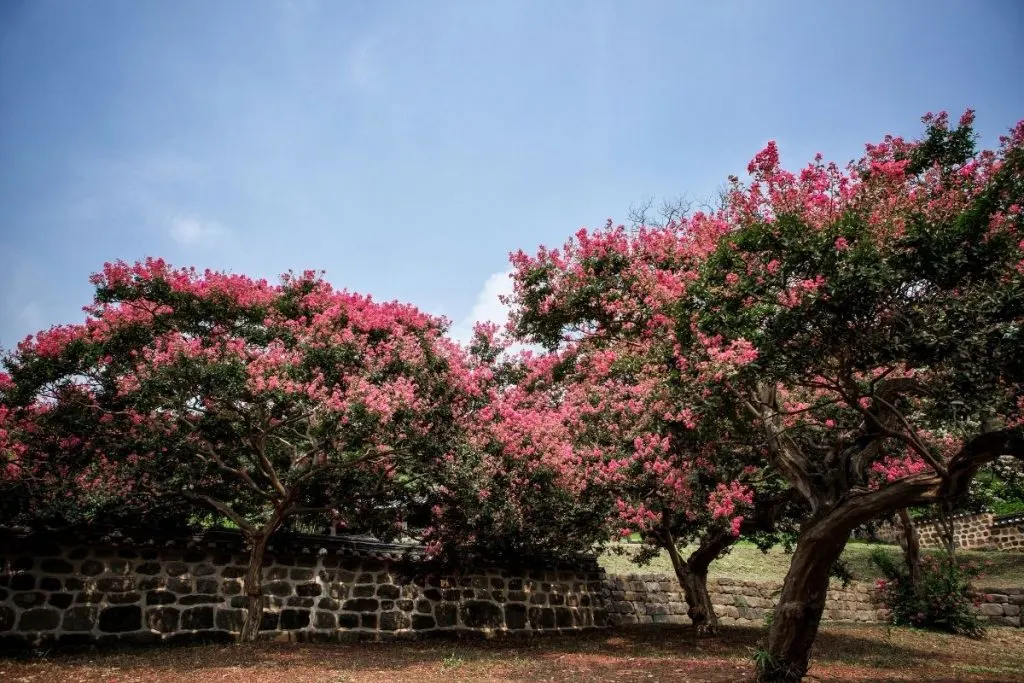
Crepe myrtle has erect flowers, and the leaves appear like a gunshot wound. Also, the beautiful appearance of this plant makes the garden more attractive.
LIGHT CONDITIONS
This tree just loves the full sun! Its showy clusters and green leaves love the sun’s warmth and they grow the best in sunny regions and areas.
Appalachian mountains are the native habitat of these lovely trees as well due to wildlife’s hard work.
WATERING SCHEDULE
This tree isn’t drought tolerant but too much water can kill it as well. Water it once a week and that should be enough for it.
When the sun is bright and temperatures are too high, you can water it 2 times per week then.
SOIL TYPE
You can choose loam, sand or clay for this tree and you won’t make a mistake. But that’s it, no more options when it comes to the soil.
All three soil types work well for your crape myrtle tree. Once you plant it, it will look great on your patio.
FERTILIZER
Your crape will love and appreciate a bit of liquid fertilizer.
PROPAGATION
This type of flowering tree is usually and most often propagated from cuttings. That is the easiest way as well, and a beginner can do it as well.
4. Evergreen Tree Southern Magnolia
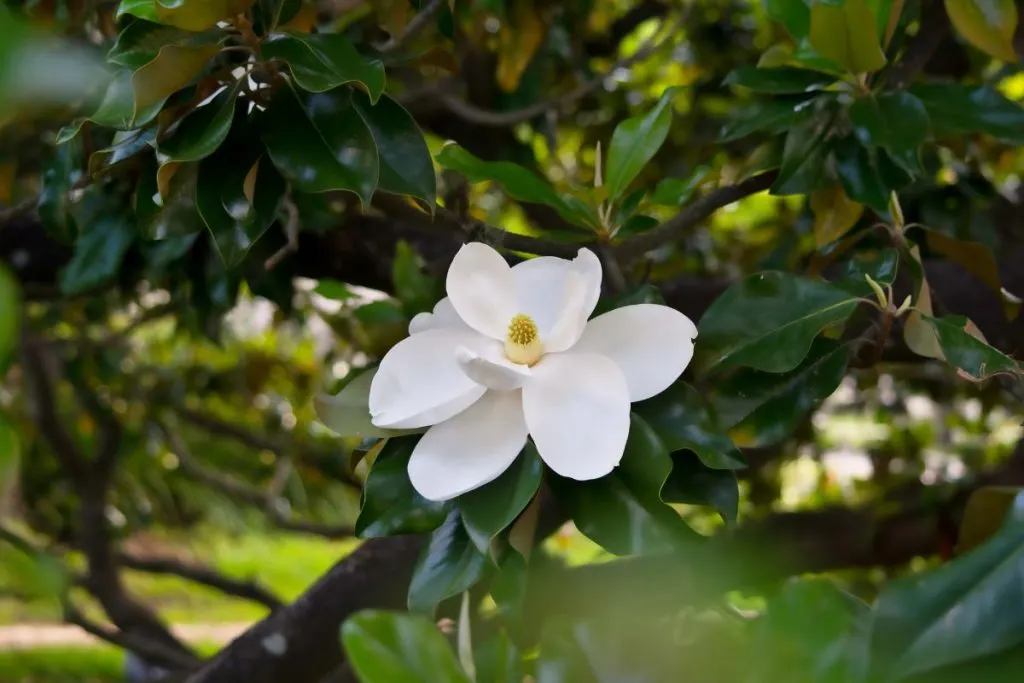
Large, creamy-white, highly fragrant flowers adorn this broad-leaved evergreen in late spring and early summer like other magnolia flowers from the magnolia family.
Perhaps the oldest one is South Magnolia, which still grows in Washington State Park in Washington, Arkansas.
LIGHT CONDITIONS
Magnolia prefers uninterrupted sunshine to lighter shades. Magnolia can benefit from a location protected from the hot afternoon sun, especially if you live in a hot or dry climate and windy locations should also be avoided.
WATERING SCHEDULE
Unrelated to their size, the good thing about magnolias is that they are low-maintenance plants and don’t require frequent watering.
As a rule of thumb, you should water magnolia trees once a week during the first two growing seasons and twice a month in subsequent years.
SOIL TYPE
Remember that deciduous magnolia varieties are best planted when they are dormant in the spring. Magnolia grows best in acidic (pH 5.0 to 6.0) well-drained, clayey, moist, and rich soils. They are tolerant of high soil moisture, but cannot withstand prolonged flooding. Partial shade or full sun is ideal.
After choosing the planting site, dig a hole at least 1.5 times the width of your specimen’s root ball or clump and slightly shallower. Remove the layer on top of the soil from the tree to expose the top root.
FERTILIZER
For southern magnolia fertilizers with the ratio of 20-5-10 or 12-4-8 are the best.
PROPAGATION
This lovely tree is propagated from cuttings. It’s a very simple routine that every beginner with plant world can do. Follow these steps and it should be alright:
- Prepare the proper container.
- Find the cutting stem.
- Take plant cuttings.
- Prepare the cut and repotting pot for the new growth.
- Rooting hormone application can be added as well.
5. Eastern Redbud And Its Mature Tree Care Guide
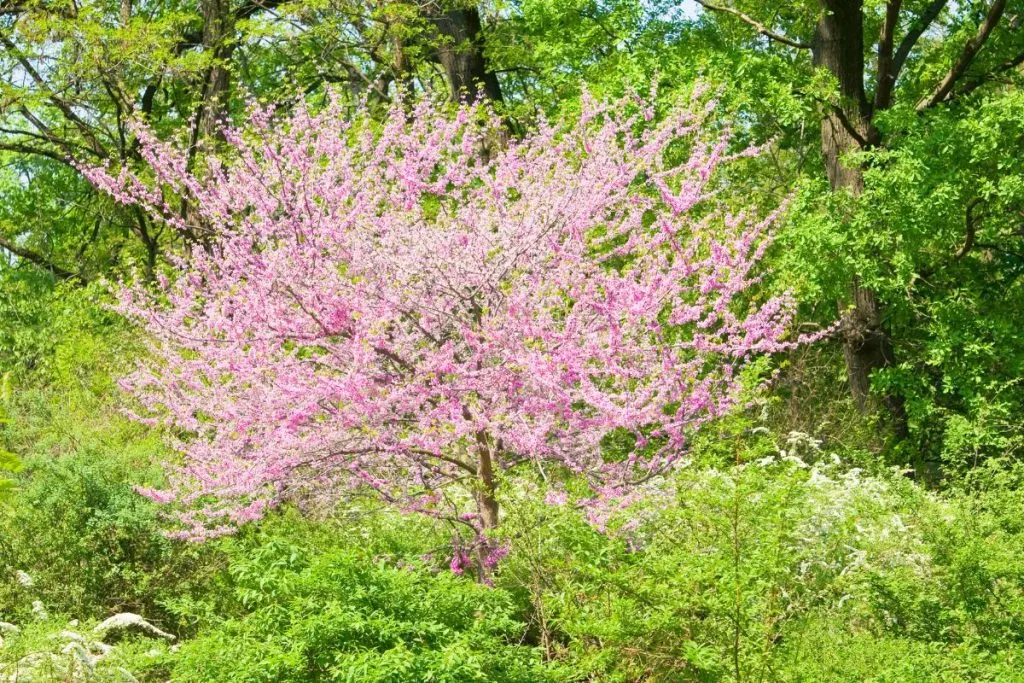
The Eastern Red Bud (Cercis canadensis) is a broad-leaved tree with bright, colorful flowers. Many varieties have purple, lavender, or pink rose flowers, and some varieties have white flowers.
The tree blooms in spring. It has dark green leaves in summer and turns yellow or yellow in autumn. White redbuds are amazing for your yard as well. Redbud has several species and I’m sure you would enjoy each one of them.
LIGHT CONDITIONS
When you plant them in the full sunlight, red buds will have full and bright flowers. A little shade is recommended for hot summer days. Redbuds can tolerate partial shade but do not grow well in full shade.
WATERING SCHEDULE
Soil should be evenly moist, but do not water the red buds too much or they’ll die. If the roots are in moist soil, they can lead to fungal infections and eventually plant death.
SOIL TYPE
Well-drained loamy soils work the best for this amazing tree.
FERTILIZER
Liquid fertilizer is the best option and it should be fertilized annually.
PROPAGATION
Place the seeds between layers of cotton cloth or between layers of vermiculite in a shallow pan. Store in a humid and warm place.
Once they start to take root, plant the seeds in containers or directly in the garden. When transplanting seedlings, be careful not to break the soft roots.
This tree can be propagated by cutting as well.
6. Tulip Poplar – Another Evergreen Tree
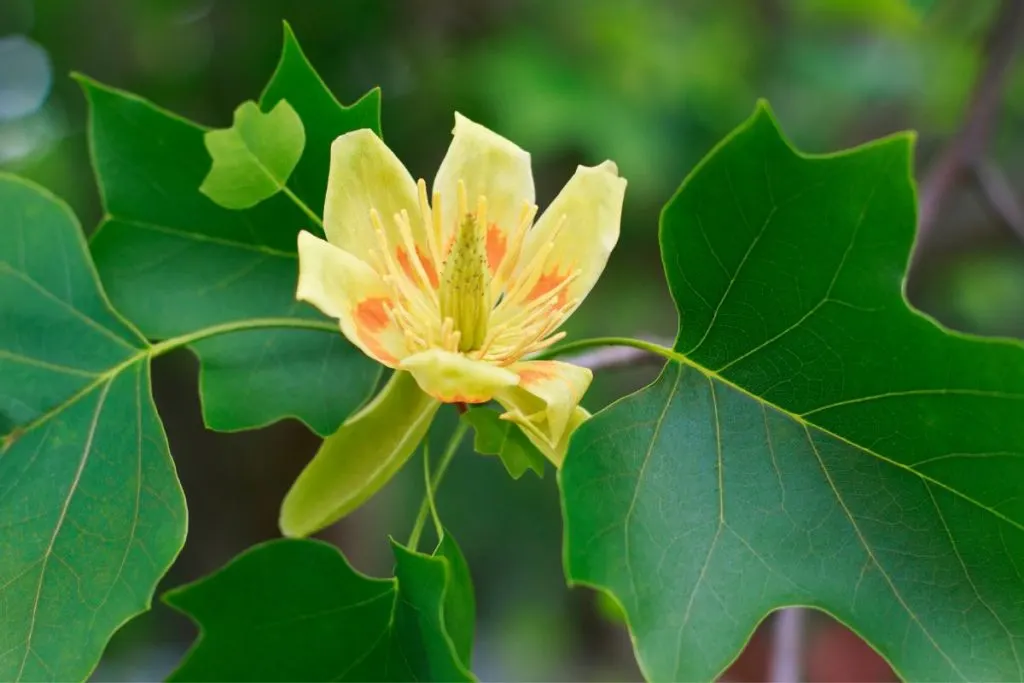
In summer and spring time the bright green-yellow tulip-like flowers are scattered in a striking orange color.
The bright flowers are followed by cone-shaped brown scaly fruits with many winged seeds. These berries can last a long time after all the leaves have fallen.
LIGHT CONDITIONS
Sun exposure for this semi-evergreen deciduous tree should be pretty higher than these other trees. This tree likes full sun exposure. It won’t harm this amazing tree.
This tree also grows in Northern Georgia. It has amazing bright yellow flowers and their fall color stays the same.
WATERING SCHEDULE
Water it on daily bases at least once since it likes full sun exposure, but during morning hours and bright light of course. It is not a drought-tolerant tree.
SOIL TYPE
Well-drained soils are the best option for this popular Georgia tree. If you want its growth rate to reach its maximum you need to pay extra attention to soil type and fertilizer, especially during the growing season.
Moist soils with a bit of nutrient work well for it as well.
FERTILIZER
Liquid fertilizer works the best for these deciduous trees.
PROPAGATION
Propagate your tulip poplar shrub like this:
- Choose a healthy parent plant to cut.
- Prepare the container.
- Find the best cutting stem.
- Take plant cuttings.
- Prepare the cut.
- Rooting hormone application (optional).
7. How To Take Care Of Chaste Tree
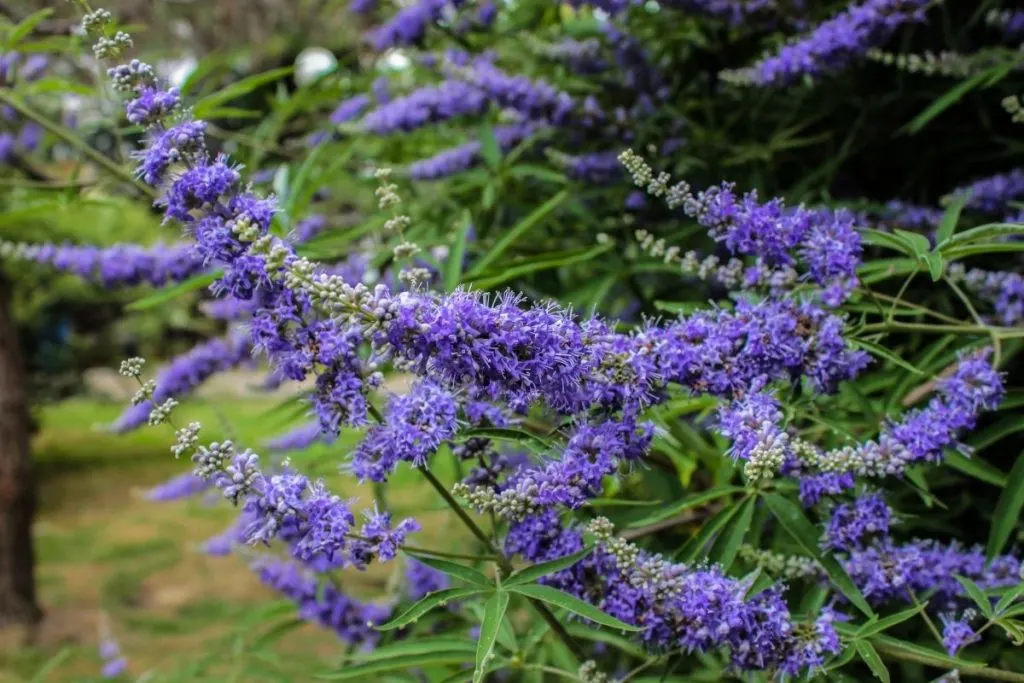
This lovely deciduous shrub is all you need in your garden this year. Its lovely purple color will brighten up your garden. This tree can be found in Central Asia as well, not only in the United States.
Any shrub or tree that blooms all summer is worth planting, but when it also has pleasantly scented flowers and leaves, it becomes a must-have plant. Especially if we are talking about a tree with purple flowers.
Caring for a chaste tree garden is simple, but there are a few basic things you need to know to get the most out of this remarkable plant.
LIGHT CONDITIONS
They need a lot of sun exposure to flower and grow well. Shade or even partial shade is a big no for this tree type.
WATERING SCHEDULE
Once established, you will probably never need to water a virgin tree. Inorganic mulch, such as pebbles or stones, allows the soil to dry between rains.
SOIL TYPE
It is best not to plant them in soil that is rich in organic matter because organically rich soils hold too much moisture near the roots.
Chaste trees do very well in xeric gardens where there is not enough water.
FERTILIZER
Avoid using organic mulches such as bark, wood chips, or straw. Fertilize the plant every year or two with a general-purpose fertilizer.
PROPAGATION
Like some of the mentioned trees above, it can be propagated both by seeds and cuttings.
Are These Flowering Trees In Georgia Attracting Wild Life?
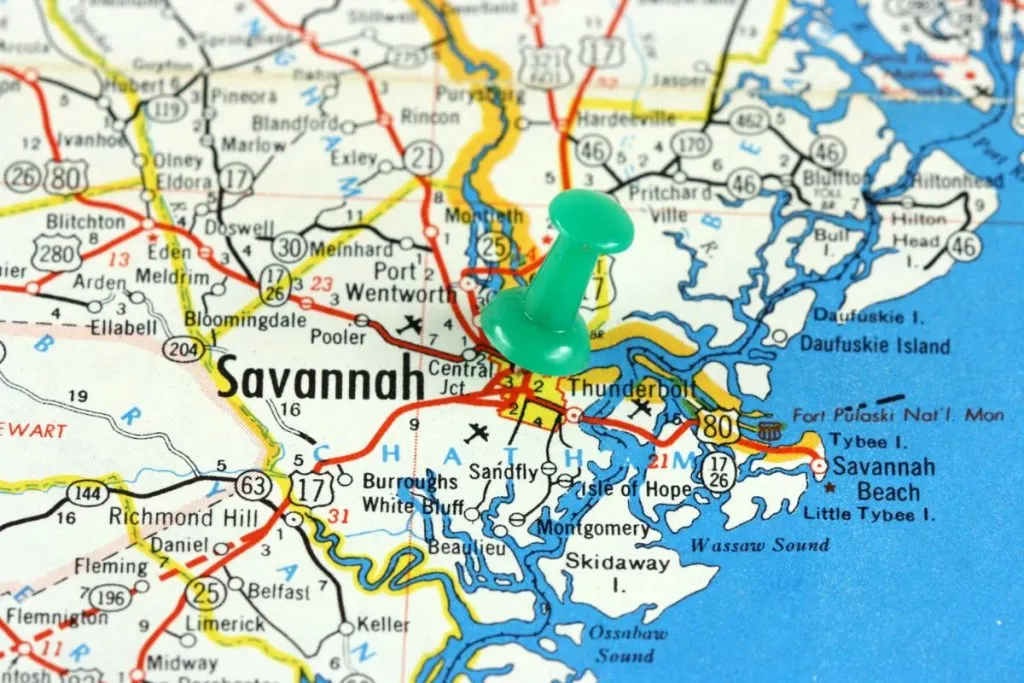
Flowering trees, no matter where the area is usually attract wildlife. This goes for butterflies, birds, bees, and that sort of wildlife.
If you’re afraid or just wondering about other animals such as deers, for example, you shouldn’t worry. These little animals are the only animals that will show up near your trees.
That’s It About Flowering Trees In Georgia

And we’ve come to an end, my sweet ladies!
In case you’re still not sure if you’ve found the right flowering trees in Georgia for your yard, check the American Holly tree as well or Azalea Tree. Those are amazing flowering trees too.
If you, however, did find something for you, good luck! I’m sure your skills will be more than perfect for your new yard trees.
See you soon darlings!

